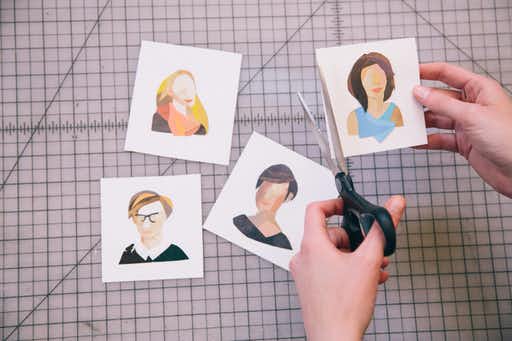
Look at your surroundings: there’s perhaps a computer, a water bottle, your cellphone, or a chair you’re sitting on. How often do you stop to think about why these things are the way they are? That’s the question Allison Press, an interaction designer at IDEO, asks everyday. In her own words, an interaction designer figures out how to enhance the human experience of interacting with things from digital interfaces to social systems. As a designer, Allison asks, “How do you translate all these physical and human things into a digital space and have it still feel authentic and genuine?”
Allison’s background in art, psychology, and journalism makes her more than equipped to answer that question. Before she studied psychology and then journalism at University of North Carolina, Chapel Hill, Allison loved theater and storytelling in high school. She found that her artistic nature, her love for storytelling, and her interest in understanding human behavior translated perfectly into design. This discovery led her to enroll in graphic design school at North Caroline State University where she landed various internships including an experience design internship at the Smithsonian National Portrait Gallery. Now she works for IDEO where she continues to learn and grow as an interaction designer.
Allison knows that design is a lot more than making a streamlined, humanistic product; designing is about making a change that is better for society. One thing Allison is passionate about is improving the education system through design.
During her time at the Smithsonian, Allison became invested in understanding how people learn. However, designing a product and redesigning a social institution are very different challenges. As Allison puts it, “These social problems are so hairy and complex because there are so many unmet and undiscovered needs within that problem. So there’s a complexity issue in that it takes a lot of brain power and empathy and detective skills to unravel these problems.” The complexity of these social issues is revealed while empathizing with people affected by the problem, a challenge accomplished by designers conducting intimate and thorough interviews.
It is this personal nature that is the beauty of design, according to Allison. Although the government is able to make sweeping policy change, it is also important, and the tenet of design, to meet with individuals and understand problems firsthand. This helps deliver a solution that is specific, meaningful, and useful. Allison encourages others to think big and take risks in order to solve these big social issues. Here are five reasons why Allison believes good design leads to public good:
1) Design solutions are easy to scale. Good design can take something small or local and widen its reach. For example, designing Khan Academy allowed school to be brought online and across the world.
2) Digital design increases access. A lot of design today means bringing interactions into the digital sphere. By improving design in this way, more people can easily get to the services or information they are searching for.
3) Design can make things more affordable. Increasing access and simplifying systems allows people to access what they need without such barriers to entry. This could mean designing a product so that it is less costly to produce, distribute or access.
4) Close, intimate, & personal. Human-centered design gets to the heart of the issue so that the solution truly addresses the need. Designers are able to do the kind of personal research critical to solving complex social issues.
5) Amplification. Designing for the digital world helps amplify voices that may typically go unheard. When a problem needs to be solved, designers listen to people’s stories in order to best help them. After all, the best design solves a problem that makes the world better for everyone!
Contributor: Rachel Savage



Comments (0)